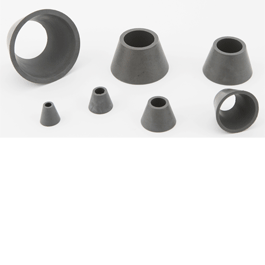A laboratory rubber stopper or a rubber bung is mainly used in chemical laboratory in combination with flasks and test tube and also for fermentation in winery.
Uses of rubber stopper in laboratory apparatus.
Rubber stoppers are ideal for plugging joints or holes in laboratory glassware and creating a liquid tight seal.
As the rubber stopper is used in many experiment some specific experiment.
Use a cork borer to drill holes in the.
Purchase general use stoppers perforated rubber at auxilab the online shop of lab material at the best price.
All common laboratory apparatus should be drawn in outline only and in their correct proportions.
X we use cookies to ensure that we give you the best experience on our website.
In chemistry bungs made of hardened rubber are frequently used in small scale experimental set ups involving non corrosive gases some chemistry bungs may also include one or more holes so a glass tube or laboratory funnel may be inserted through the bung and into the container or another piece of apparatus.
The rubber bung may be used to seal a flask because the user may require the contents.
Use 0 for large test tubes and 1 for extra large.
For small test tubes use 00 stoppers.
Learn about some common pieces of laboratory equipment and how to use each one properly.
Commonly encountered equipment in the chemistry laboratory.
Stoppers can have holes for thermometers and for other probes that may be used.
Also known as a conical flask the erlenmeyer flask was named after its inventor in 1861.
However we have compiled all possible common and comprehensive list of 20 laboratory apparatus and their uses.
The narrow opening also allows for the use of a rubber or glass stopper.
The sizes are from 0 to 8.
Generally in laboratory the sizes of rubber stopper can be varied up to approximately 16 sizes and each of it is specific to certain type of container.
Rubber stoppers can also prevent the contamination of samples by protecting the contents of laboratory glassware from air.
This allows easy mixing and swirling of the flask without too much risk of spilling.
We carry stoppers both with and without pre drilled holes in a wide range of the most common sizes.
Use 6 5 stoppers for 250 ml flasks.
Rubber stopper stoppers come in many different sizes.
Rubber bungs are often used with glass containers such as test tubes flasks jugs and many other pieces of standard lab equipment.
It has a narrow neck and expands toward its base.
Lab equipment and uses.
Last the use of rubber stoppers allows experimenters to shake or mix solutions without.
The primary purpose of a rubber stopper is to prevent a gas or liquid from escaping its container during a scientific experiment.
Some lab work requires a full setup of glassware.
You ll need one or two hole rubber stoppers for those experiments and use 5 mm glass tubing to connect to other apparatus.
















































